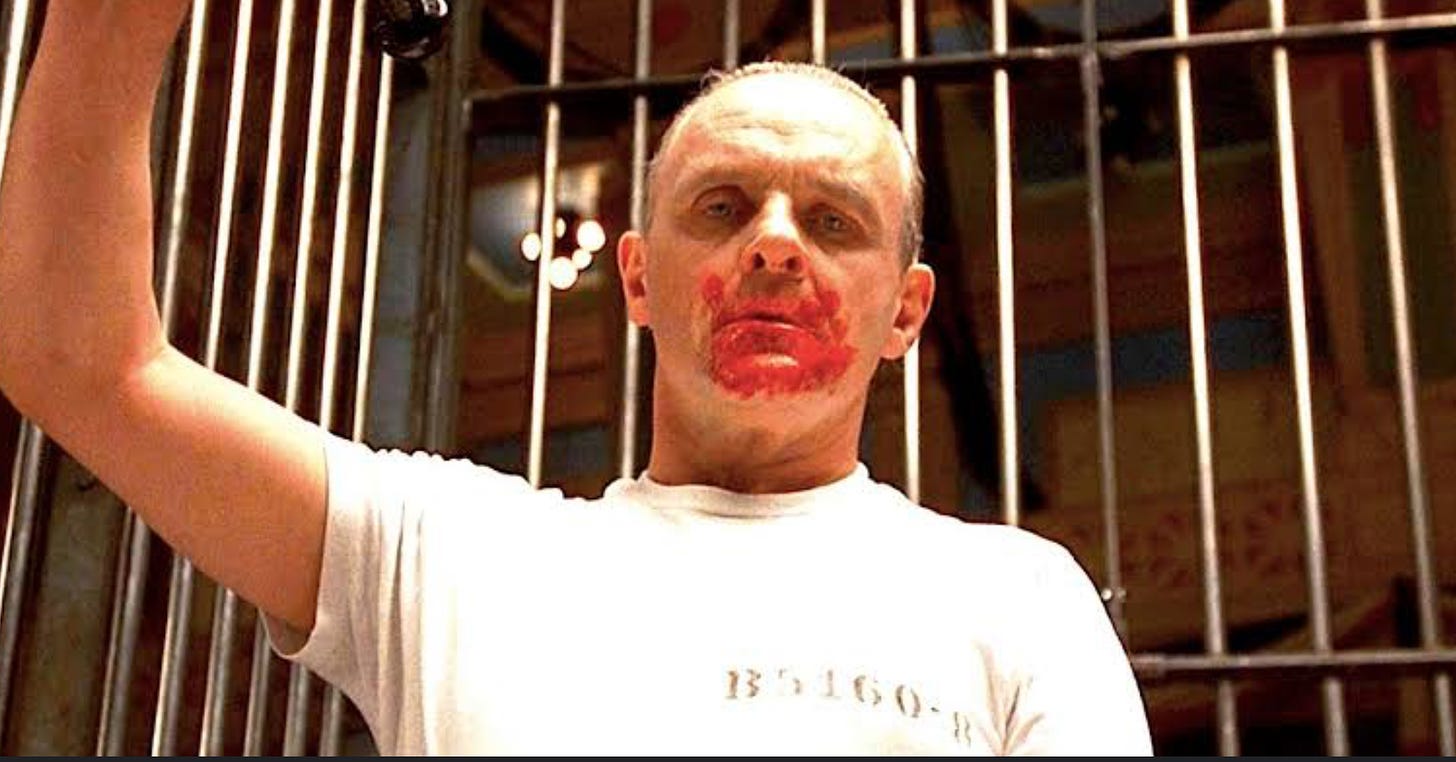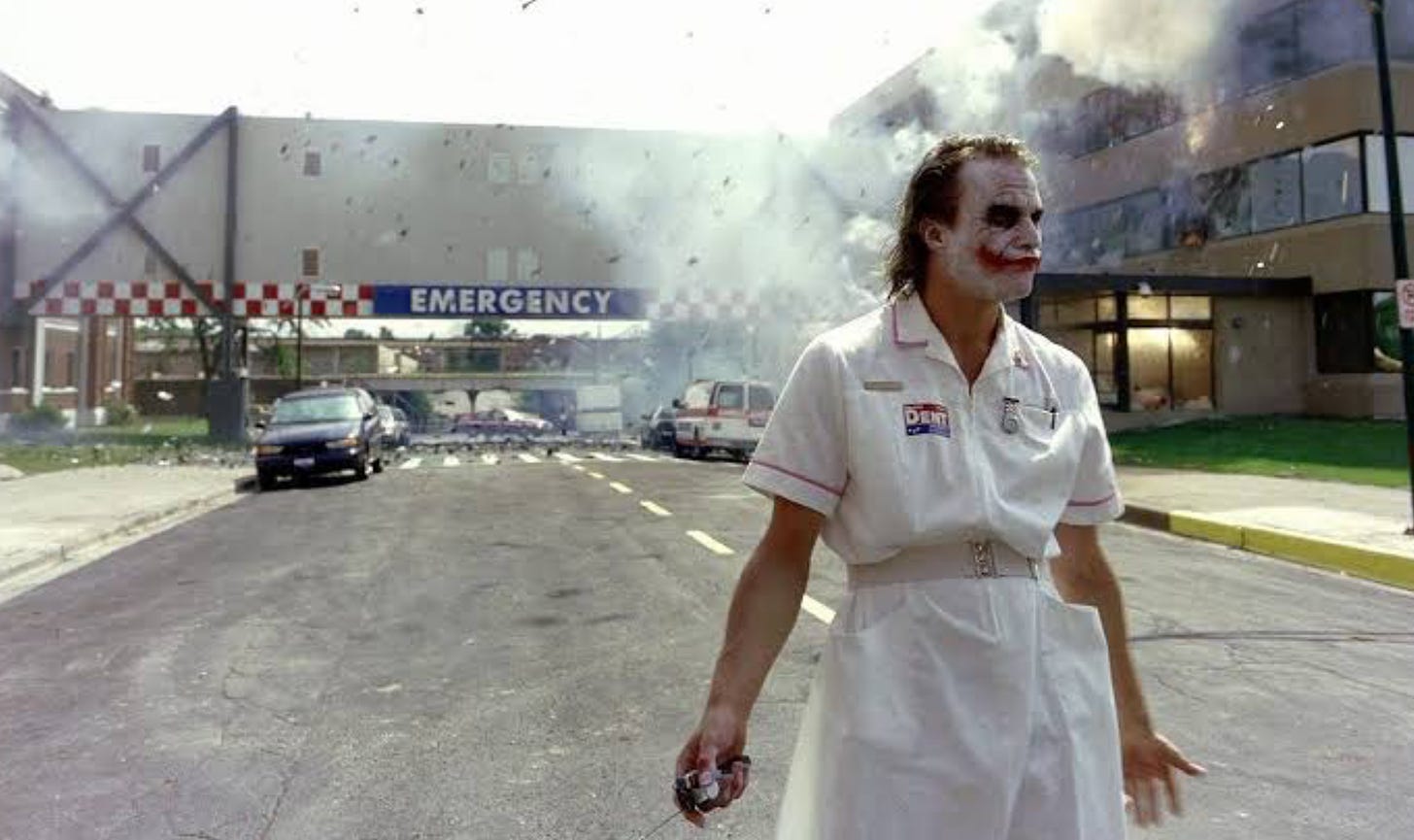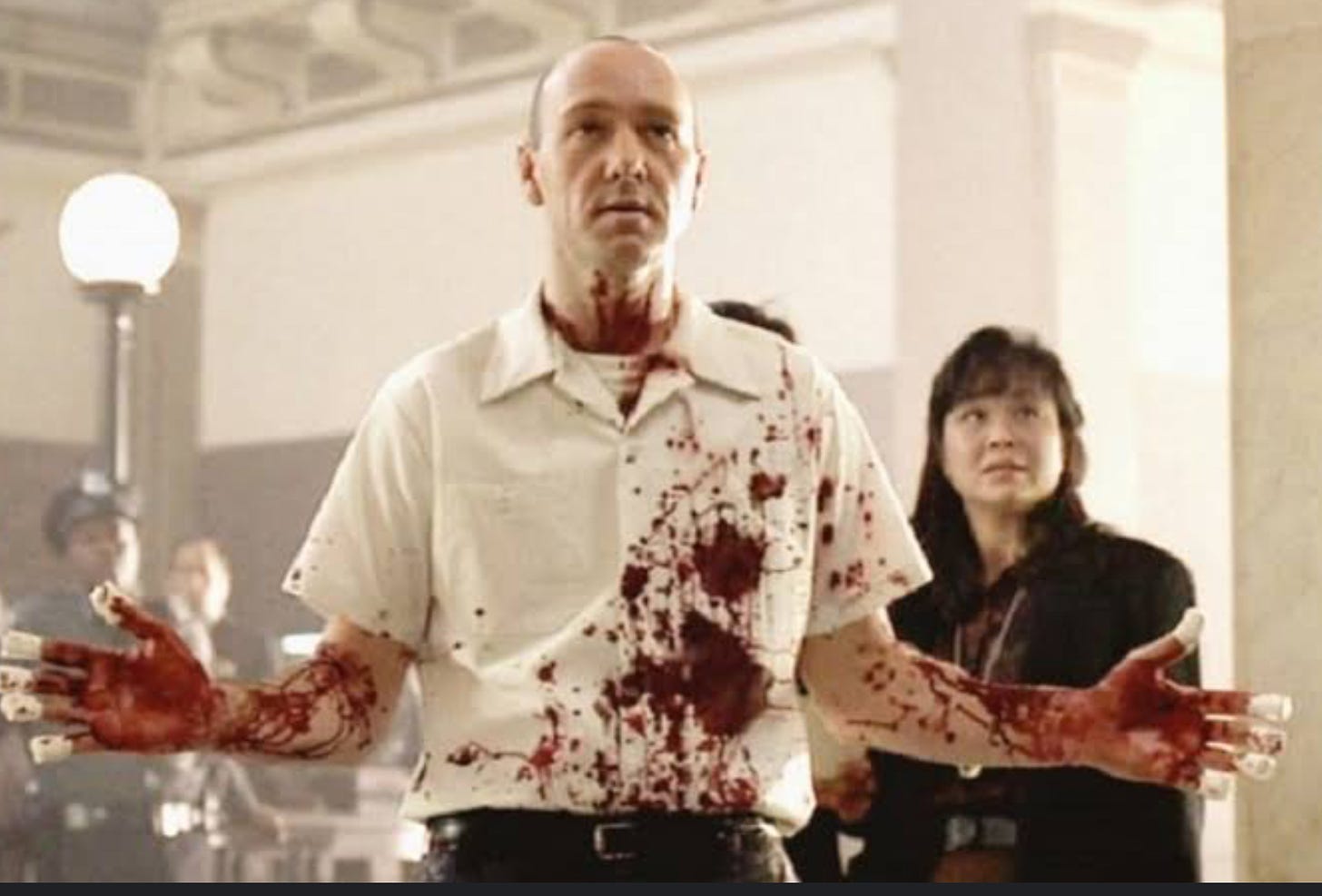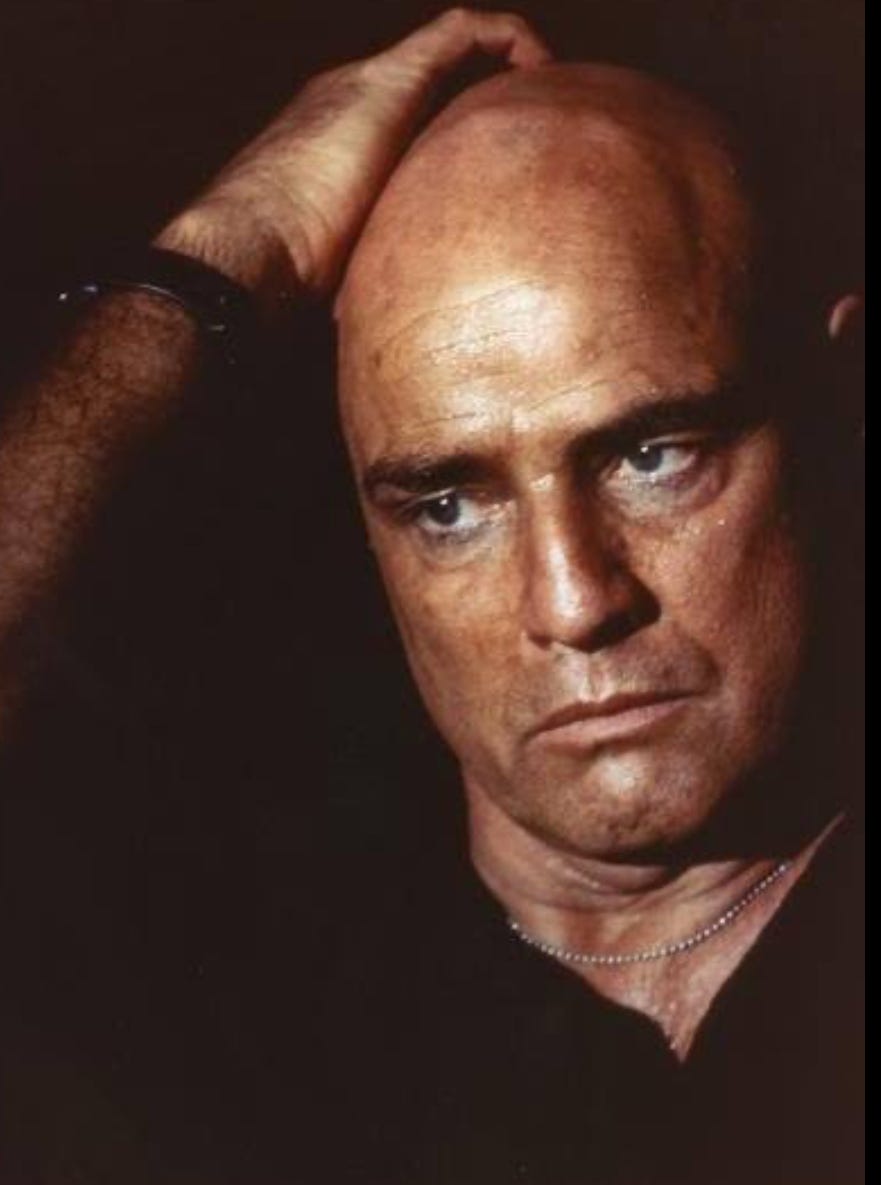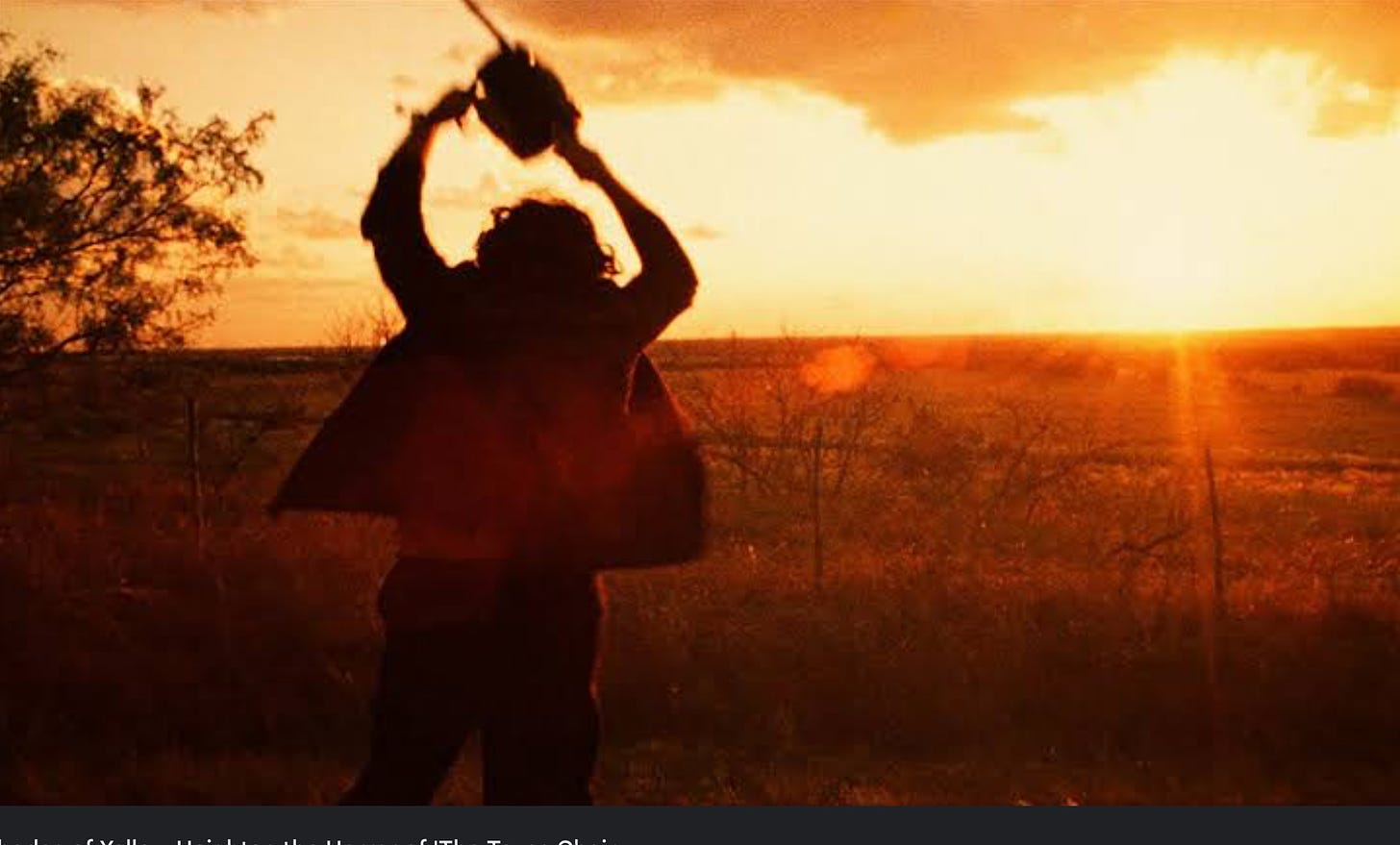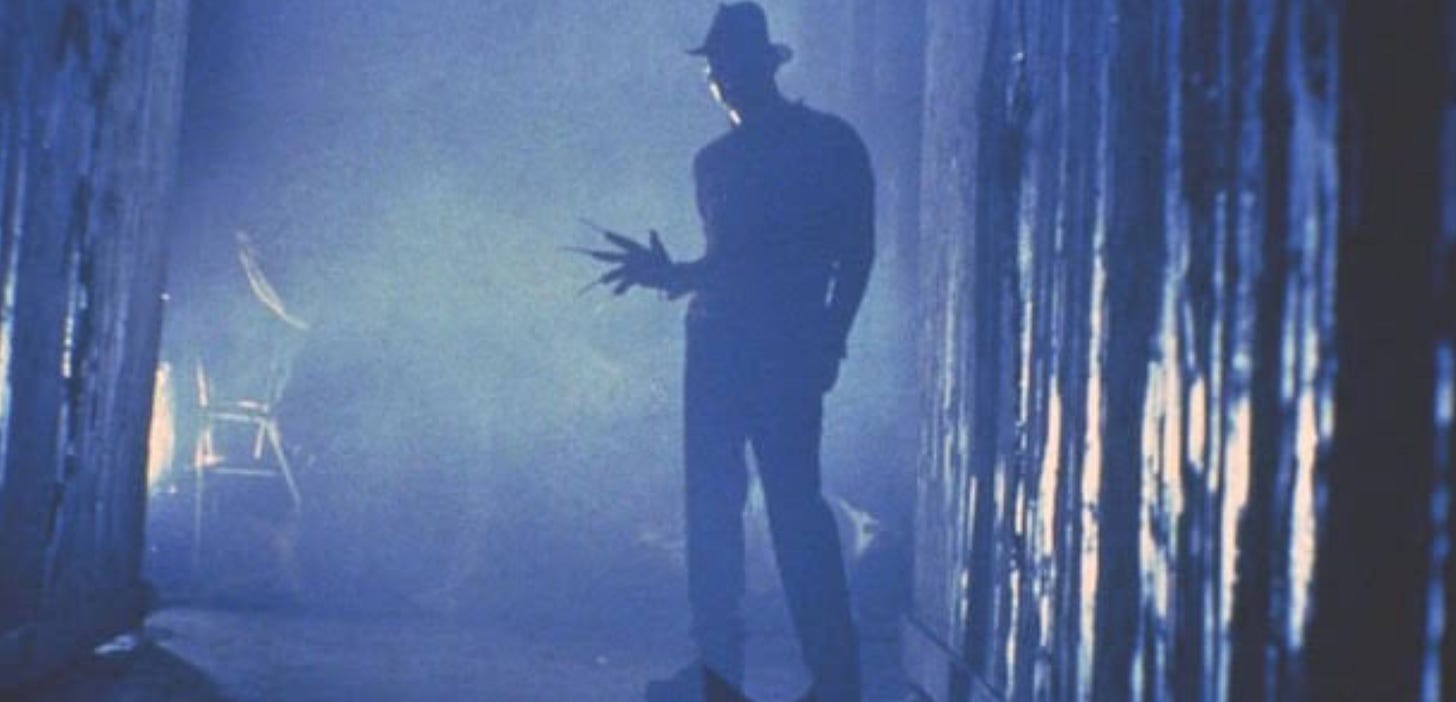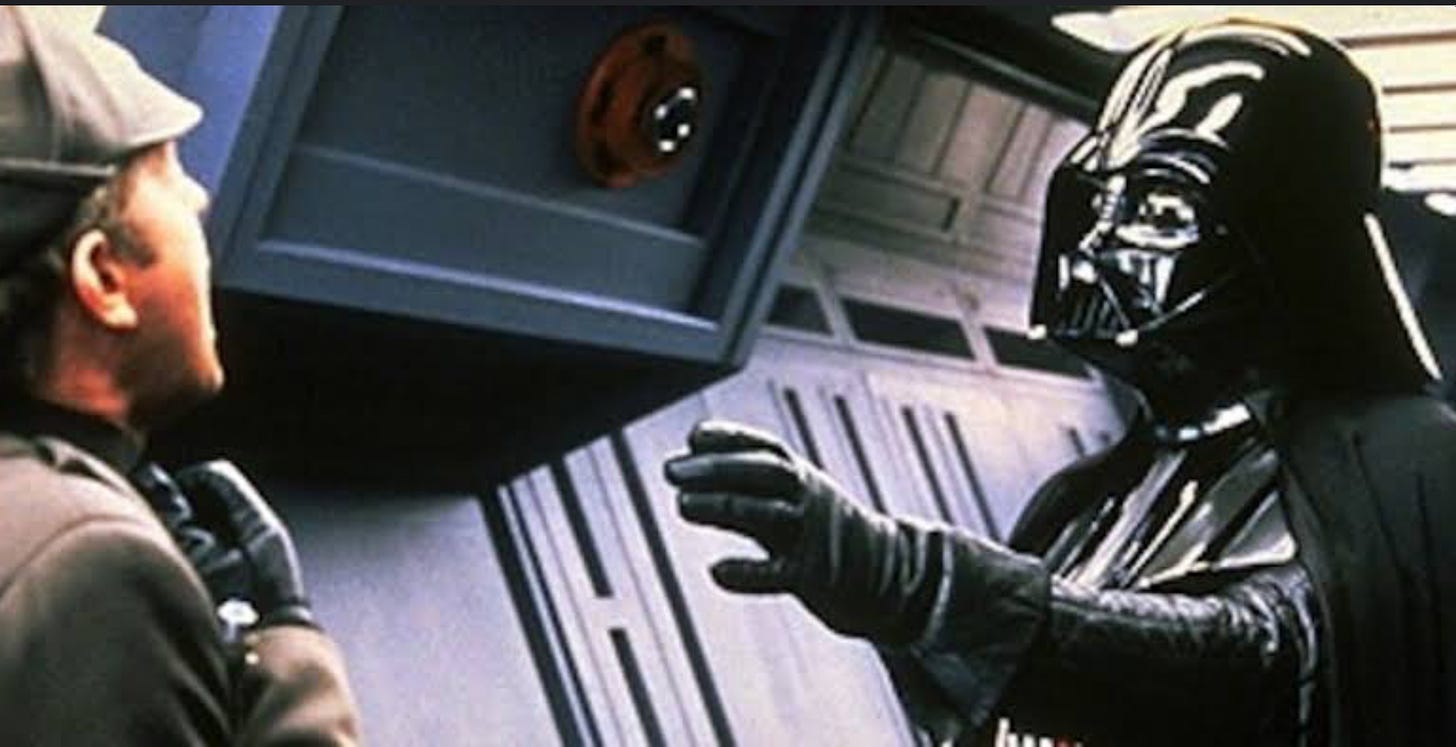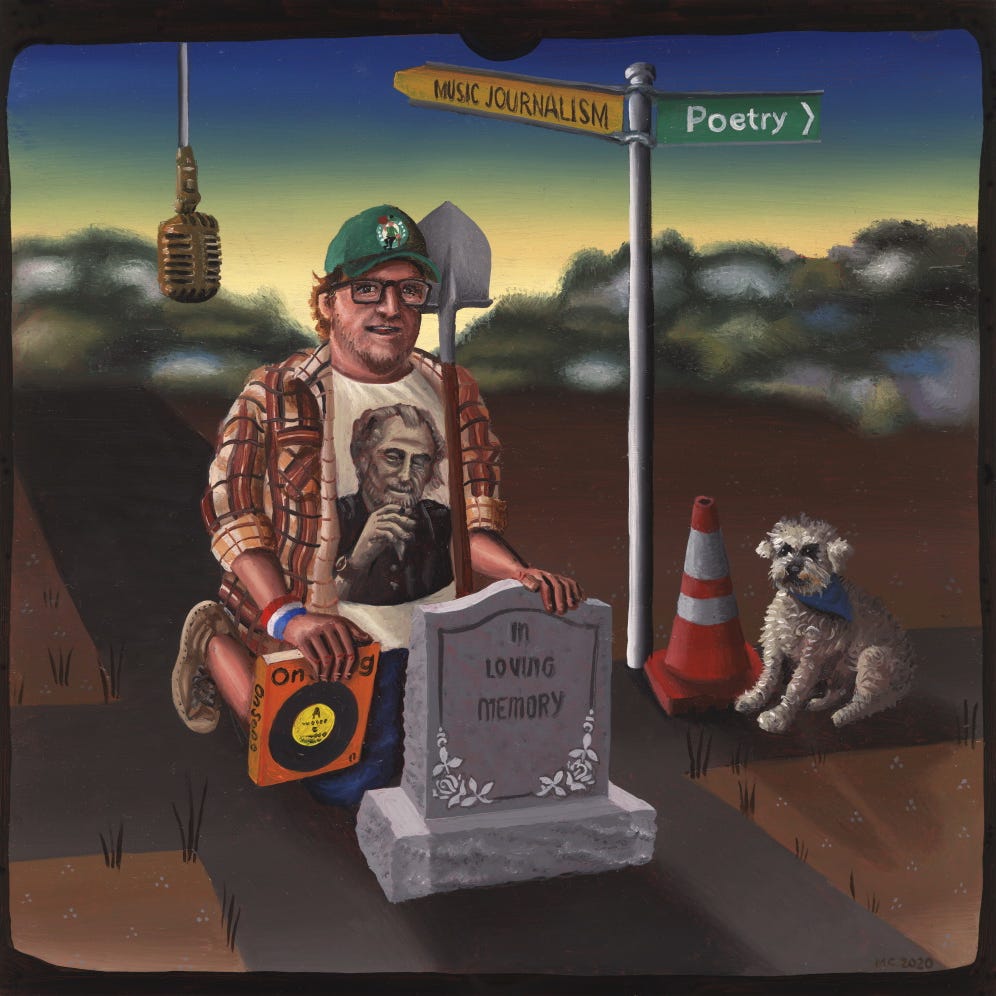The Best Villains Are Barely There
Monday is about movies, and sometimes TV. Today, thinking about how the best villains don’t hog the screen, but burn themselves deep into it.
Anthony Hopkins famously won an Oscar for Best Actor in 1991’s Silence of the Lambs. He brought to life an enduring villain — it wasn’t even the first time Dr. Hannibal Lecter had been taken from the page to the stage. Brian Cox, star of Succession, played the psychopathic cannibal in Michael Mann’s 1986 film, Manhhunter (the first filmed adaptation of the Silence prequel, Red Dragon). Cox was brilliant, Manhunter is wonderful — but everyone knows the Hopkins performance.
Lecter has been played by a handful of other actors, Red Dragon was remade under its novel’s title, and there’s even a series devoted to Hannibal, as well as increasingly camp — ludicrous — Lambs sequels.
But what towers above it all, is Hopkins’ Oscar winning portrayal, where he has a total of 16 minutes screen time in a 2-hour movie.
It’s not the shortest amount of time for an Oscar-winner, but it’s one of the best-known examples.
Beatrice Straight would win a Best Supporting Actress Oscar for 1976’s Network, for a role that amounted to less than five minutes on screen.
But in terms of movie villains with short screen time vs. huge impact, it’s really Hopkins-as-Lecter that takes the Oscar-baited biscuit.
Heath Ledger was posthumously awarded with a Best Supporting nod for his portrayal of The Joker in The Dark Knight. It’s a much longer movie than Silence of the Lambs. Something like 152 minutes. And Ledger is only on screen for 33 of those. (Some reports say 25 mins). But he burns down deep into the screen. His Joker is a creepy gold standard, held up now, somewhat dubiously, as something approaching an anti-hero.
Heath’s Joker is the modern-day Hannibal Lecter in some sense.
But I think one of the best ways a film’s truly evil villain can exist is if they linger longer in the mind than on the screen. Think of Kevin Spacey in Seven. Kevin Spacey himself now far more of a villain than the ones he played so memorably in The Usual Suspects and Seven. But in the Fincher film, Spacey’s John Doe is only there for the final 20 minutes. He’s talked about before he’s seen, and Spacey himself refused screen-credit, figuring it would give things away a bit if audiences were anticipating him. So when you remember back to when you first saw Seven, it was a genuine surprise — and genius move — to have the Spacey reveal. He was less of a name too, of course, but he was known.
Marlon Brando was only in Apocalypse Now for 15 minutes of a two and a half hour film. He was almost the opposite of Spacey. His billing helped people know about the film and his lack of presence is felt; he is anticipated. He was also a right royal pain in the arse on the set — watch the brilliant documentary making of (its own feature film, Hearts of Darkness) to see Brando at his petulant, erm, best. Around the same time he was paid the most money in the world for a cameo, playing Superman’s dad in the big-screen iteration, and appearing for just a handful of minutes. But the Brando name and big personality was what you were paying for.
Horror of course is the place that best knows this, and gets this right. The true scare is in the buildup. Tell, don’t show, it might almost seem — but in a visual storytelling sense it is actually still very much a case of show don’t tell. And sure, Silence of the Lambs, Seven, and even The Dark Knight can all be classified as horror — if you stretch the definition just slightly. Even Apocalypse Now blends in some aspect of existential horror.
But in true horror it is the thing. We hear about and from Jigsaw in Saw before ever really seeing him. We barely ever see the shark in Jaws (famously due to technical difficulties as much as anything) and I haven’t done a screen-time check, but Leatherface doesn’t really dominate The Texas Chainsaw Massacre at all. In fact, he’s a slightly demure goon when he is there too — until of course he finally gets his chainsaw. The clue there is in the title but we have to wait. And wait we do. And the payoff is that majestic, bonkers, beautiful and brilliant image of the lunatic spinning, delirious, almost hacking his own leg off with the chainsaw as the sun strikes the camera.
In A Nightmare On Elm Street — the first film taut, almost sleek, for my money utterly brilliant — Freddy Krueger is only seen in stolen moments, little alleyway shadows. It amounts to just seven minutes of screen time. You could argue that Jason Vorhees isn’t even in Friday the 13th, but we go to that film already with knowledge of him. Michael Myers in Halloween too, only there in mood for the most part, as an actual presence in just a few key scenes.
And so it is with our very best villains. Horror absolutely knows this. And nails it.
But sci-fi and fantasy also. Voldemort is He Who Cannot Be Named, right? I pretty much loathe that Harry Potter series, and even I know that!
And Darth Vader, the villain we grew up with as basically a hero in the 1980s, like a wrestling heel essentially…he is only in Star Wars Episode IV: A New Hope for a total of 12 minutes. But even close to 50 years later, you rewatch that film and you wait to hear James Earl Jones’ voice, and to see that black glove do its air-guitar version of a chokehold.




